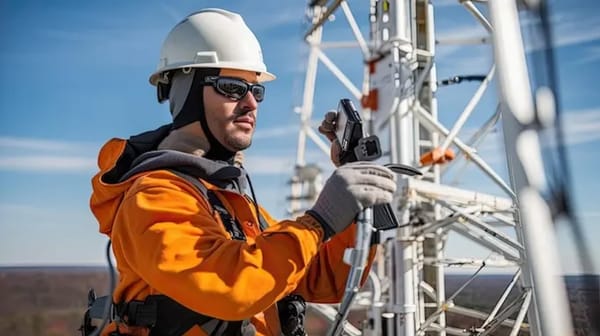Modern-Day Alaskan Broadband Benefits from Satellite Earth Station Competition
August 10 – Today’s technologically advanced Alaska is a far cry from Jack London’s frontier in The Call of the Wild. Yet while dog-sledding remains a common form of transportation, the image of the disconnected wilderness man is today more myth than reality.
Broadband Census Alaska
By Jennifer Clark, Special Correspondent, BroadbandCensus.com
August 10 – Today’s technologically advanced Alaska is a far cry from Jack London’s frontier in The Call of the Wild. Yet while dog-sledding remains a common form of transportation, the image of the disconnected wilderness man is today more myth than reality.
In Alaska, facilities-based competition between telecommunications providers may be having a positive impact in boosting the quantity and quality of high-speed internet access in the most remote and sparsely populated state in the United States.
Five years ago, in August 2003 the Federal Communications Commission scrapped its previous “Alaskan bush policy,” so named after the term used for the state’s remotest regions. The previous policy forbade the installation or operation of more than one satellite earth station to compete with ordinary interstate telephone service.
Under former FCC Chairman Michael Powell, the agency eliminated what it called an “outdated policy” — an approach that protected AT&T subsidiary Alascom. General Communications Inc. (GCI) began setting up its own satellite earth stations and competing with AT&T. The two companies each began offering broadband to these most-remote communities.
The results were similar to what happened after an earlier decision to grant GCI a temporary waiver and allow telephone competition with Alascom: higher speeds, more reliable service, and lower prices throughout the bush communities.
This leap to broadband had not been anticipated by all. In 2003, the consultancy Information Gatekeepers Inc. predicted that dial-up service in Alaska would be obsolete by 2007. Critics noted the lack of organized efforts by Bell telecommunications companies to build infrastructure for broadband access.
Yet in 2007, a preliminary analysis of broadband by the Regulatory Commission of Alaska showed that less than 13% of communities in organized boroughs lacked broadband. Of those that did lack service, 90% had a population less than one thousand people.
A majority of Alaska’s 16 boroughs, comprising 159 communities that hold 86% of Alaska’s population, has high-speed internet access, according to the commission’s report. Wireless and digital subscriber line (DSL) service dominate the Alaskan market.
Cable television penetration has been more limited, and cable modem service is only available within the state’s larger cities. One community with fiber optic access, Prudhoe Bay, has a population of five and is home to the largest oil field in the United States.
But wireless services remains crucial to meeting access needs in Alaska. The Alaskan native community of Kasaan utilizes wireless broadband service for its connectivity, according to the November 2007 E-Government magazine. “By enhancing the local quality of life [through distance learning, training and telemedicine], business and tribal members will be encouraged to return or stay in Kasaan,” said the magazine.
In August 2008, the Seattle-based Alaskan Airlines plans to launch in-flight broadband use for its customers.
Broadband Census Resources:
- Regulatory Commission of Alaska, the telecommunications regulatory body for the state
- Regulatory Commission of Alaska broadband internet access program, a web site providing details about rural Alaska broadband internet access.
- Regulatory Commission of Alaska spreadsheet, providing information on grants for Alaskan internet connectivity
- Dumping ‘Alaska Bush’ Policy Is Good For Broadband, article, Telecom Policy Report, August 13, 2003
- “Alaska local & borough government,” University of Alaska Anchorage web page
- Federal Communications Commission Data on Broadband in Alaska (BroadbandCensus.com, August 10, 2008)







